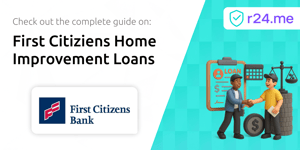
Every dollar you earn holds potential beyond your monthly bills. By embracing strategic financial management and harnessing modern tax rules, you can transform routine paychecks into a roadmap toward lasting wealth. Whether you’re just starting a career or looking ahead to retirement, practical income optimization techniques empower you to build, preserve, and transfer wealth effectively.
This guide demystifies 2025’s key contribution limits, retirement strategies, and estate-planning tactics. You’ll learn how to leverage employer benefits, structure your investments, and create a personalized action plan that suits your goals and risk tolerance.
Effective income optimization begins with reducing your current tax burden. By careful timing and maximizing allowance-based accounts, you can keep more of what you earn and redeploy it into growth vehicles.
Regularly review available tax credits and the annual gift exclusion of $19,000 per recipient. Consider establishing irrevocable trusts or family limited partnerships to shield assets and minimize potential estate taxes, which can reach up to 40% without planning.
Beyond minimizing taxes today, you need a robust plan for tomorrow. Strategic allocation among retirement accounts, Social Security, and diversified investments forms the core of your long-term prosperity.
Increasing contributions and understanding dynamic withdrawal methods can extend the longevity of your portfolio during retirement. Delaying Social Security benefits past full retirement age (67–70) can significantly raise your guaranteed monthly income.
*Includes employer match; up to $81,250 for ages 60–63 with catch-up contributions.
Well-balanced portfolios combine equities, bonds, real estate, and alternatives. Dynamic withdrawal strategies adjust spending in response to market performance, helping you avoid depleting funds too quickly.
Preserving wealth means ensuring efficient transfer and protection of assets. Early planning can reduce tax liabilities and safeguard your legacy against unexpected risks.
Annual gifting up to $19,000 per recipient allows you to pass significant wealth without incurring gift tax. Consider these tools:
Irrevocable trusts and family limited partnerships can shield assets from creditors and limit estate tax exposure. Life insurance within an irrevocable trust provides liquidity for heirs to pay estate taxes without selling long-term assets.
Regularly update beneficiary designations on retirement accounts and insurance policies. A cohesive estate plan—drafted with an attorney—ensures your wishes are clear and legally enforceable.
Turning knowledge into habit requires discipline and periodic review. Organize your record-keeping, automate savings, and make quarterly check-ins part of your financial routine.
By following a structured process and leveraging modern tools, you’ll cultivate financial resilience and flexibility, ensuring each paycheck accelerates your journey to prosperity.
From maximizing tax-advantaged accounts to establishing trusts for future generations, the strategies outlined here offer a comprehensive blueprint. While the numbers and laws may shift over time, the principles of disciplined saving, diligent planning, and strategic asset allocation remain constant.
Begin today by setting up or adjusting your contributions, refining your budget, and consulting trusted advisors. With each intentional step, you move farther along the path from a routine paycheck to true, enduring prosperity.
References













